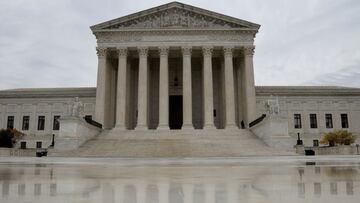What is the Texas abortion law? What is the Texas abortion ban?
The Southern state has a ban on abortion after six weeks of pregnancy, setting it on a collision course with the federal government.

There are nine states that have passed legislation that would essentially ban abortion by the sixth week of pregnancy, referred to by anti-abortion proponents as “fetal heartbeat” legislation. At six weeks, ultrasound scanners can detect the group of cells that will become the heart as they produce their first electrical pulses, which is utilized by anti-abortion activists as the stage of fetal viability. At this stage of pregnancy, the majority of women are not even aware that they are pregnant.
This is the basis of Texas' abortion law, changed in September. Citizens are also encouraged to sue doctors who perform abortions after six weeks, which has led to an outstanding court case which will decide the future of abortion in the state.
Every day that SCOTUS fails to block Texas’ unconstitutional abortion ban is devastating. We can’t wait any longer. The Senate should end the filibuster and finally pass the Women’s Health Protection Act.
— Elizabeth Warren (@SenWarren) November 22, 2021
How was the new Texas abortion law passed?
The legislation is known as Senate Bill 8 and was pushed through the Republican-led Texas state legislature before being signed into law by GOP Gov. Greg Abbott in May. It is a new interpretation of the ‘heartbeat bills’ that are often forwarded by anti-abortion groups in order to prevent abortions once embryonic cardiac activity is detected.
A study from the University of Texas found that the strict new restrictions would prevent around 85% of women from receiving access to abortion care. There is no exceptions offered in instances of rape or incest.
From this https://t.co/XBeClnt9J1
— Molly Jong-Fast (@MollyJongFast) November 26, 2021
The new legislation would seem to fly in the face of the precedent established by Roe v. Wade in 1973, but the Texas legislature has attempted to circumvent that ruling by incentivizing private citizens to bring civil suits. Under the new law, individuals who suspect that someone is aiding or abetting a woman getting an abortion after six weeks in the state of Texas can sue them in civil courts for a minimum of $10,000.
This reversal is designed to insulate Texas officials from legal challenges that would occur if they attempted to enforce the law, while providing an incentive for Texans to inform on clinics and individuals.
Supreme Court refuses to block the Texas abortion ban
The Supreme Court’s decision to allow the ban to coming into force is a significant one for the future of abortion rights in the United States, but did leave plenty of scope for further challenges to the law. The five justices who voted to allow the ban to stand stressed that their ruling was not based on the constitutionality of the law and provided a joint statement saying that they would hear any “procedurally proper challenges” to it.
The four dissenting justices all filed individual opinions on the Court’s decision, decrying the majority’s decision to yet the ban stand.
Justice Sonia Sotomayor described the ban as “a flagrantly unconstitutional law engineered to prohibit women from exercising their constitutional rights and evade judicial scrutiny,” slamming those on the court who had “opted to bury their heads in the sand.”
Related stories

What are the abortion laws in America? In what states is it illegal to have an abortion?

What does fetal heartbeat mean?
Chief Justice John Robert was the sole conservative voice to join in dissention and he issued a clear signal that there was judicial recourse for those looking to challenge the law. He said that the “statutory scheme before the court is not only unusual, but unprecedented,” arguing that it appeared designed to “insulate the state from responsibility for implementing and enforcing the regulatory regime.”
If this is your defense of the Texas abortion ban, you don't care about the life of the mother either. https://t.co/ILhDBeq8vV
— Hemant Mehta (@hemantmehta) November 27, 2021
This is why the upcoming Mississippi ruling is so important. The state has redefined the viability of a fetus from 24 weeks to 15. If it is decided by the Supreme Court that this time of viability can be changed, it opens up a whole new conversation about state s deciding for themselves when a fetus is viable, putting Roe v Wade under even more pressure.